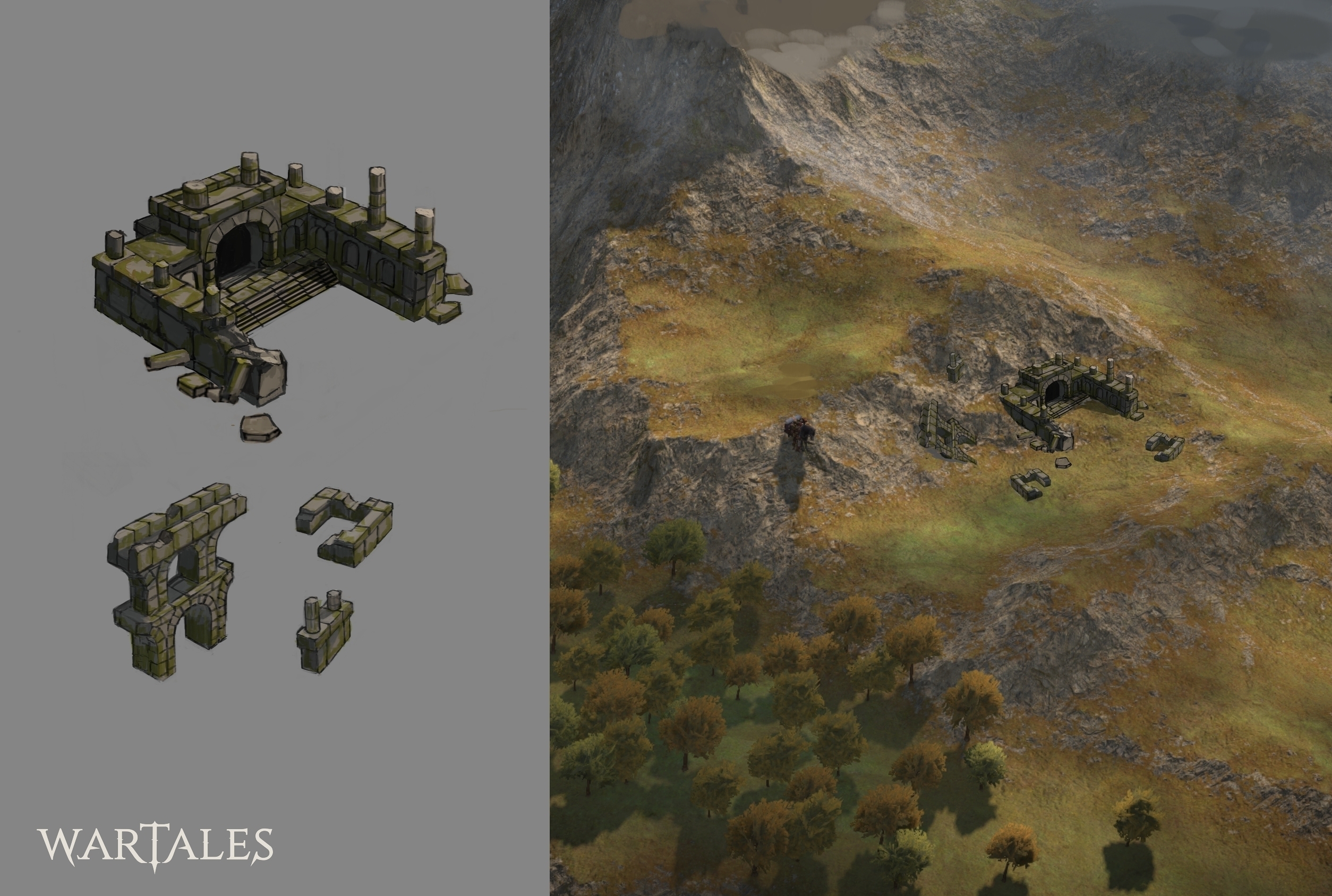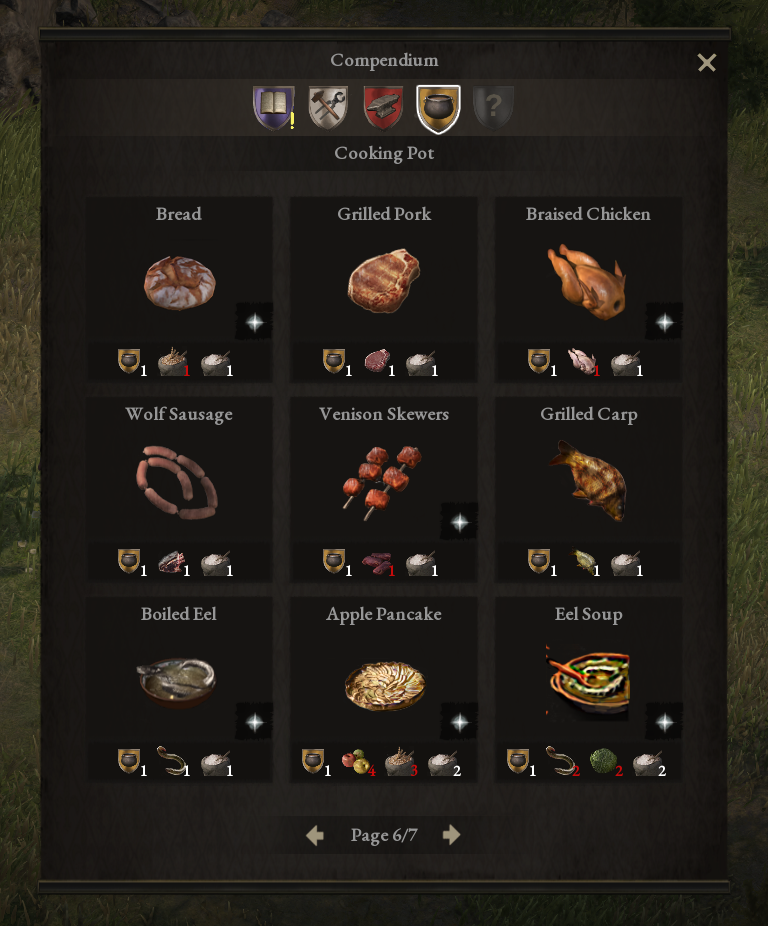
Originally posted by author
Attention Mercenaries!
Welcome to this weeks Wartales Q&A!
Today, we talk about the World of Wartales and the inspirations behind it. We take a look at the different ways of navigating it, how it will grow and evolve over early access and some of the more interesting sights and scenes you can expect to come accross in your travels...
Read on to find out more!
[h3]How many regions are there in Wartales and how do they differ from one another?[/h3]
First of all, I want to make it clear that the number of explorable regions at the release of the EA will be different than at the final release. It is therefore expected that we will release a good number of regions during the EA. We want to take the time to work on our regions properly, whether it's the narrative, visual or gameplay aspects. In this sense, we have set a rule for ourselves and we are committed to it: each region must offer a different gameplay experience. If by adding a new region, we change nothing except the location of places to discover, then we will not validate such a region. Regarding the average size of a region, the size of the demo is an medium size and we plan to develop between 20 and 30 regions, each with its own scenario, its own game rules, its own unique missions, its own local specialities, its own geology and all its own specificities.
[h3]What are the inspirations for the environment ?[/h3]
We really enjoyed working on the environment. Nature, both splendid and terrifying, dominates the vast expanses where only the brave dare to venture. The inhabitants of these lands are hardened by the climatic conditions and the many dangers that threaten them every day, whether supernatural or not. In general, the environments of Wartales are very much inspired by Scotland and the north of England. There are snow-capped mountains and windswept moors as well as vast oceans with dark, turbulent waters. Nature inspires a sense of wonder and danger to enhance the sense of adventure. The colours and atmosphere can change dramatically depending on the time of day and the vagaries of the weather.

The architecture is influenced by different eras, such as the Middle Ages. One can feel that Romanesque architecture is still very much present, especially in the temples and in the use of Roman tiles for the most important buildings. The rest of the dwellings are more rudimentary with low stone buildings with wooden or thatched roofs. In general, the architecture reflects a decline and a period when important knowledge was lost. The fauna is semi-realistic and the classic bestiary of the European countryside, coasts, forests and mountains contrasts with the rare fantasy elements of the game which I am sure you will enjoy discovering and fighting!

[h3]Are there ways to travel between regions other than walking?[/h3]
Of course! On the back of a dragon. More seriously, we're planning different ways to move around the map quickly. If you've paid your way into the counter of two different villages, you can take the common road and travel by carriage between the two very quickly. Also, if you find the entrance to a mountainous gallery, you can enter it and try to find an exit on the other side (which will sometimes be in another region!). Once you have done this, you can now go through the gallery very quickly to travel between the linked regions.

We also have a climbing system that allows you to place ropes at the top of cliffs that will allow you to climb down certain cliffs. By doing so, you can access certain hidden locations, reach a related region or simply create your own shortcuts in the world! We felt it was important to let the player take control of their appropriation of the world. Finally, in a yet undefined future, you can hope to sail the icy waters of Wartales...
[h3]Will there be hidden locations to discover?[/h3]
Of course. Exploration is one of the main features of Wartales. What would an exploration game be without hidden locations? I won't talk too much about it of course so as not to spoil it, but you should know that there are different types of hidden locations. Some are only accessible via certain game mechanics. For the others... you'll have to look harder. Or turn your camera!

[h3]What are some of the interesting things I could find around the map?[/h3]
The world you live in is alive and organic: wild animals roam the forests, bandits wait in abandoned watchtowers, the Guard hunts down thieves and the Ghost Pack attacks remote villages. It is also vast, with some twenty regions shared by the major forces. In this context, you play as a neutral group, free to act and do as you wish (while obviously assuming the consequences of your actions). In short, you lead an itinerant band of adventurers who are not tied to any one place and are eager for adventure and combat. However, going on an adventure for several days in the wilderness requires careful preparation. Indeed, the game is designed to require adaptability and real preparation for each expedition. As a reminder, characters must be paid every day, fed at every rest and armour must be repaired with raw materials and wounds healed with remedies. For example, there is in-game content such as the Tombs of the Ancients that are designed to take time to complete (count several days of rank at a time to explore a tomb with potentially many battles).

Thus, you will need to prepare yourself in the service areas of towns and villages to stock up on supplies and then go on adventures. In short, the further you progress in the game, the further you can go: you should see the villages as beacons to which you must return to sort and empty your inventory (limited in weight to be stored but compensated for by the recruitment of animals such as horses) and replenish your supplies for your next expedition (food, materials, remedies). Indeed, the more gold you have, the better you will prepare your expeditions and the more difficult content you will achieve (sometimes several in the same expedition).
Then, you will explore and travel. We have established regions in which Points of Interest (POIs) are placed. A POI can be a place where resources are collected (mine, sawmill), a place where resources are spent (forge, apothecary's office), a town (which groups together several POIs) or a singular place whose operation can be unique. In all cases, if a POI offers unique or systemic gameplay, it is above all a place where the game's narrative can emerge.

POIs allow us to create an effect of expectation, projection and desire for completion. A POI is constructed in the form of a point & click gameplay diorama: a 3D scene, an open shot of the daily life of the world's inhabitants, such as the interior of a farm or a tavern. It offers actions to perform, visible or hidden, characters to talk to, elements to interact with...

As the game progresses, you will come across points of interest that may have regional particularities. Near the sea, you will find fishing huts. In the often icy mountains, abandoned guard posts used by kingdoms to protect themselves from bypasses stand alongside bandit-occupied mines and unexplored ruins. The challenge is to offer content that is adapted to the environment in which it is placed, while providing its own dose of narrative. In Wartales, there is no main quest or main story with heroes, cinematics and achievements. There are only stories told in the form of narrative fragments and, above all, the stories that the player tells himself and to which the game is designed to respond and echo.

The elements placed in the world are the first direct vectors of this narrative. With this in mind, we have placed resources to be collected according to a logic: cowbane is collected in swampy surroundings while snow iris only grows in the mountains. The same goes for the points of interest: it is impossible to find a mine in the middle of a plain and conversely, you will not find a cabbage farm in the middle of a mountain. The coherence of the world thus directly involves the gameplay. Depending on your needs, you will explore this or that corner of the world to collect these resources. And maybe, have fun getting lost!
Originally posted by author
Thanks for taking the time to read, we'll see you next week for the next entry in our weekly series of dev Q&A's!
Don't hesitate to leave us a question on, Discord, Twitter, Facebook or on our Steam forums, we'll do what we can to get it answered in a future article!
And don't forget, you can now sign up to take part in the upcoming Wartales playtests over on the Steam page where you can also Wishlist the game, if you haven't already!
- Shiro Games









 Hubert Robert - The Old Temple - 1787
Hubert Robert - The Old Temple - 1787















